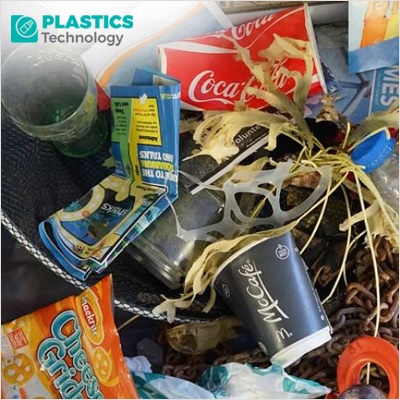Navigating Plastic Sustainability: Challenges and Opportunities in Industry

Introduction to Plastic Sustainability
The growing global concern about environmental sustainability has put the spotlight on plastic usage and its impact on our planet. Plastics, known for their durability, versatility, and cost-effectiveness, have become indispensable in various industries. However, their environmental footprint poses significant challenges. This article delves into the complexities of plastic sustainability, exploring the challenges and opportunities faced by the industry in navigating this crucial issue.
The Environmental Impact of Plastics
Plastics are derived primarily from petrochemicals, contributing to greenhouse gas emissions and environmental pollution. The durability that makes plastics useful also means they persist in the environment for centuries, leading to pollution in oceans and landfills. The Great Pacific Garbage Patch is a stark example of marine pollution, consisting predominantly of plastic debris. Addressing these environmental impacts is a critical challenge for the industry.
The Need for Sustainable Alternatives
As awareness of the environmental impacts of plastics grows, there is a pressing need for sustainable alternatives. Biodegradable plastics, made from renewable resources like corn starch and sugarcane, present a promising solution. These materials break down more easily in the environment, reducing their ecological footprint. However, the production and performance of biodegradable plastics present their own set of challenges that the industry must navigate.
Challenges in Biodegradable Plastics
While biodegradable plastics offer a sustainable alternative, they come with challenges. Their production can be resource-intensive, sometimes competing with food crops for land and water. Additionally, the biodegradation process requires specific conditions that are not always present in natural environments. Effective waste management and recycling infrastructure are essential to ensure that biodegradable plastics fulfill their sustainability promise.
Advancements in Plastic Recycling
Recycling plays a pivotal role in managing plastic waste. Advancements in recycling technologies, such as chemical recycling and enhanced sorting methods, are improving the efficiency and scope of plastic recycling. Chemical recycling, for instance, breaks down plastics into their chemical components, allowing for the creation of new plastics with similar properties to virgin materials. These innovations present significant opportunities for enhancing plastic sustainability.
Challenges in Recycling Infrastructure
Despite technological advancements, recycling infrastructure faces numerous challenges. Inconsistent recycling systems, lack of consumer awareness, and contamination of recyclable materials hinder effective recycling. Developing standardized recycling systems and educating the public on proper recycling practices are crucial steps in overcoming these challenges.
Regulatory Landscape and Policy Initiatives
Governments and regulatory bodies play a crucial role in driving plastic sustainability. Policies such as plastic bans, extended producer responsibility (EPR), and incentives for sustainable practices are shaping the industry's approach to plastic usage. The European Union’s Single-Use Plastics Directive and various national plastic bag bans exemplify policy measures aimed at reducing plastic waste. These regulations present both challenges and opportunities for the industry.
Industry Innovations and Corporate Responsibility
The private sector is also actively addressing plastic sustainability. Many companies are adopting sustainable practices, such as using recycled materials, reducing plastic packaging, and investing in sustainable product design. Corporate social responsibility (CSR) initiatives are driving innovation and commitment to sustainability. Companies like Unilever and Coca-Cola are leading the way with ambitious sustainability goals, setting examples for the industry.
The Role of Consumers in Driving Change
Consumer behavior significantly influences plastic sustainability. Increasing consumer demand for eco-friendly products is encouraging companies to adopt sustainable practices. Consumers are more informed and conscientious about their purchasing decisions, driving the market towards sustainability. However, educating consumers about the impact of plastics and promoting sustainable consumption patterns remain key challenges.
Opportunities in Circular Economy Models
The circular economy model presents a transformative opportunity for plastic sustainability. This model emphasizes the reuse, repair, and recycling of materials, creating a closed-loop system that minimizes waste. Implementing circular economy principles can significantly reduce the environmental impact of plastics and create economic opportunities through resource efficiency and innovation.
Technological Innovations in Sustainable Plastics
Technological advancements are at the forefront of sustainable plastics. Innovations such as bio-based plastics, advanced recycling technologies, and nanotechnology are revolutionizing the industry. For instance, researchers are developing plastics from algae and other renewable sources, which offer promising sustainability benefits. These technologies present opportunities for reducing reliance on fossil fuels and minimizing environmental impact.
Collaborative Efforts for Plastic Sustainability
Collaboration across industries, governments, and communities is essential for addressing the challenges of plastic sustainability. Multi-stakeholder partnerships, such as the Alliance to End Plastic Waste, are bringing together diverse expertise and resources to tackle plastic pollution. These collaborative efforts are crucial for developing comprehensive and effective solutions.
Economic Implications of Plastic Sustainability
Transitioning to sustainable plastics has significant economic implications. While the initial investment in sustainable practices and technologies can be high, the long-term benefits include cost savings through resource efficiency, reduced waste management costs, and new market opportunities. Sustainable practices can also enhance brand reputation and consumer loyalty, providing a competitive edge.
Education and Awareness Campaigns
Raising awareness and educating the public about plastic sustainability is crucial for driving change. Campaigns like the Plastic Free July challenge individuals and communities to reduce their plastic usage and adopt sustainable practices. Education initiatives in schools and communities can foster a culture of sustainability and empower future generations to make environmentally conscious choices.
The Future of Plastic Sustainability
The future of plastic sustainability lies in continuous innovation, effective policy implementation, and widespread adoption of sustainable practices. As technology advances and awareness grows, the industry has the potential to significantly reduce its environmental impact. Sustainable plastics will play a crucial role in creating a more sustainable and resilient future.
Conclusion:
Navigating plastic sustainability is a complex but essential endeavor for the industry. Addressing the environmental impacts of plastics, developing sustainable alternatives, improving recycling infrastructure, and fostering collaboration and innovation are key to overcoming the challenges and seizing the opportunities in this space. With concerted efforts from all stakeholders, the industry can pave the way towards a more sustainable future.
Key Takeaways:
- Environmental Impact: Plastics contribute to pollution and greenhouse gas emissions, necessitating sustainable alternatives.
- Biodegradable Plastics: Offer solutions but present challenges in production and degradation conditions.
- Recycling Advancements: Chemical recycling and improved sorting enhance plastic recycling.
- Regulatory Policies: Government regulations drive sustainable practices in the industry.
- Corporate Responsibility: Companies adopt sustainable practices and CSR initiatives.
- Consumer Influence: Informed consumers drive demand for eco-friendly products.
- Circular Economy: Emphasizes reuse and recycling, offering sustainability benefits.
- Technological Innovations: Bio-based plastics and advanced technologies reduce environmental impact.
- Collaborative Efforts: Partnerships and collaborations are essential for effective solutions.
- Economic Implications: Sustainable practices provide long-term economic benefits and competitive advantages.
- Education and Awareness: Public education campaigns foster sustainable behaviors.
- Future Prospects: Continuous innovation and policy implementation will drive the future of plastic sustainability.



